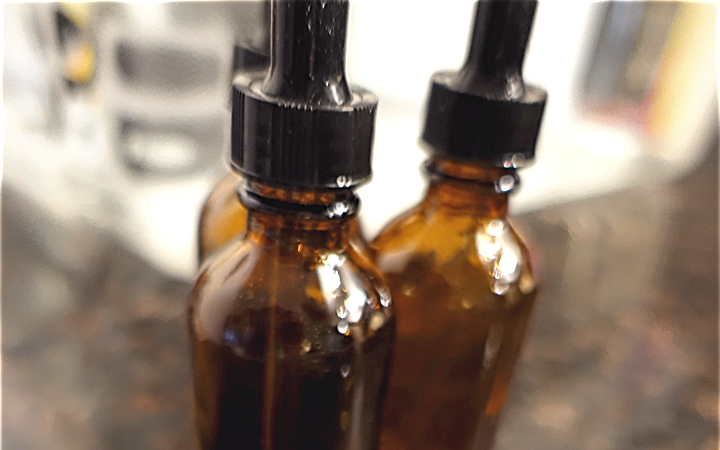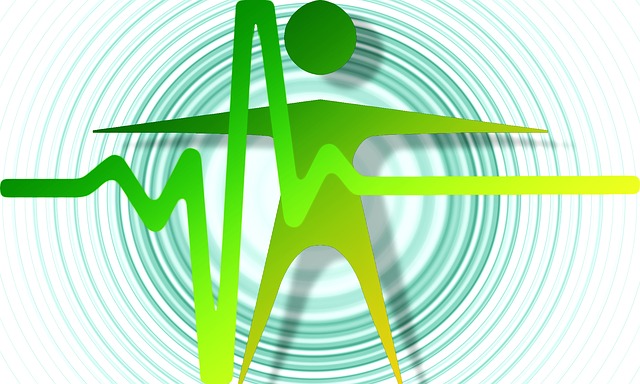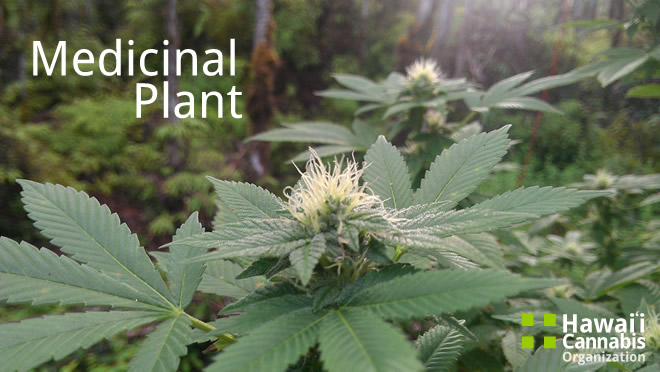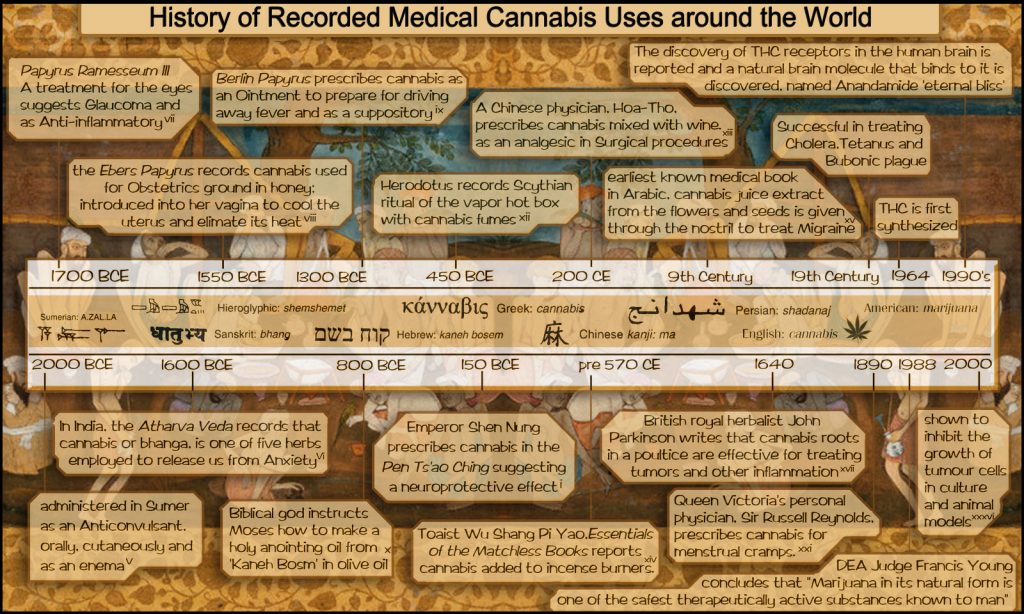Mike West: Understanding Hemp-Derived CBD

Login here or Become a Paid Member, to View this content. Mahalo
The U.S. Constitution vs. the U.S. Department of Health vs. the U.S. Drug Enforcement Agency
If nothing else we can all be certain that the U.S. Federal government can no longer agree on the value of Cannabis. Should an agreement be reached between health officials and law enforcement officials before prohibiting the use of Cannabis? The following evidence suggests, any law prohibiting the use of anything can be created and strictly enforced […]
2014 Cannabis Research Study Links
Cannabis Research http://phoenixtears.ca http://thesethgroup.org http://cannabis-med.org/index.php?lng=en http://gwpharm.com/cannabinoids-science.aspx
Largest Study Ever On Marijuana And Epilepsy Shows Effectiveness Of Cannabis
Marijuana has been proven to be tremendously effective when it comes to treating epilepsy. It seems like most of the time that I see medical marijuana being talked about on the news or in print media, it’s almost always talking about how CBD can help epilepsy, with countless success stories. There are a lot of
Every Study Shows Cannabis Works As Medicine For Patients

When California voters passed Proposition 215 in 1996, the Golden State became the first to legalize medical cannabis in the United States. There was one hitch. No scientific studies and clinical trials demonstrating the effectiveness of cannabis as medicine were available to researchers.
Some
“My recommendation was, look, establish a center to study this,” said Grant, who’d previously looked into whether moderate marijuana use causes long-term brain damage (conclusion: it doesn’t).
“It’ll cost you some money but these studies have not been done before,” he told the legislators.
Soon, Grant found himself in charge of the new state-funded Center for Medicinal Cannabis Research.
It was an enviable position. Many scientists in the United States would love to do experiments using pot, but it’s been incredibly difficult to study. The Drug Enforcement Administration lists marijuana as a schedule one drug alongside heroin and ecstasy.
It’s a category reserved for drugs with “no currently accepted medical use.” Grant said his work challenging that assumption wouldn’t have been possible without Sacramento fully behind him.
“Without the state of California saying, ‘Yes, we support this work,’ we probably would’ve never gotten federal approval,” Grant said.
Grant worked with scientists throughout the UC system to complete a series of small human trials. They sourced their samples from the only federally sanctioned grow operation, a pot farm at the University of Mississippi.
“It would be a joint basically,” Grant said. “But very professionally rolled, I might say. It looked like a cigarette.”.
The joints all looked and smelled the same, but not all of them got subjects high.
These studies required placebos, so some joints contained no THC, sort of like the pot version of decaf coffee. Grant had to convince DEA agents these samples would not leave the lab.
“The DEA has to come locally and say, ‘Where are you going to store it? Let’s look at your research pharmacy,’” Grant said. “In one case they said, ‘Is that safe bolted to the floor?’”
Subjects smoked their joints in hermetically sealed rooms with no ventilation leading toward non-participants who might unwittingly inhale stray fumes.
Grant and his colleagues had to jump through lots of regulatory hoops to pull off the experiments. But once they were done, the findings surprised him.
“I kind of expected, well, we’re going to have a few studies that say yes and a few that will say no, and then at the end of the day we’ll still be arguing,” Grant said. “But in fact every single study showed benefit.”
Grant said it’s now well-established that cannabis is effective in treating neuropathic pain in patients with diseases like HIV/AIDS. It can reduce spasticity in multiple sclerosis. And — perhaps obviously — it can stimulate appetite in underweight patients.
Grant said more research is needed before reaching conclusions about marijuana’s usefulness with other diseases, like epilepsy and schizophrenia. He also admits some purported uses have little to no scientific support. But taken altogether, Grant says there’s now more than enough evidence to justify rescheduling marijuana.
Other scientists agree. The American Academy of Pediatrics recently called for rescheduling. Even U.S. Surgeon General Vivek Murthy has acknowledged marijuana can be helpful in treating certain conditions.
Alex Kreit, a professor at the Thomas Jefferson School of Law, said learning more about pot will be difficult without rescheduling.
“It makes it very hard for researchers to get access,” Kreit said. “There are a whole host of hurdles that schedule one drugs come with, as far as research, that schedule two, three and so forth simply don’t have.”
“It’s completely incongruous that it’s sitting in schedule one with other useless, dangerous drugs.”
The post Every Study Shows Cannabis Works As Medicine For Patients appeared first on CANNAiQ.
Study Suggests Cannabis Will Replace Adderall & Ritalin For ADD/ADHD Treatment

Adderall and Ritalin are DEA Schedule II substances. This means, they have a “high potential for abuse,” can “lead to severe psychological or physical dependence” and are considered “dangerous”
“When we look at upperclassmen, the number really begins to jump,” says Alan DeSantis, professor of communications at the University of Kentucky who has conducted research on use in college. “The more time you stay on campus, the more likely you are to use.”
Two-thirds of college students are offered Adderall and other prescription stimulants by their senior year, and about half of that group (or 31 percent overall) are just saying yes, according to a 2012 study published in the Journal of American College Health.
Medicinal cannabis is proving to be just as or more effective than common ADD/ADHD prescriptions without the risks and unpleasant side effects.
The with ADHD who had limited success with conventional treatments for the disorder (Adderall and Ritalin). All 30 reported “improved concentration and sleep” and “reduced impulsivity” after using medicinal cannabis, according to the case report.
Moreover, 22 out of the 30 patients decided to forgo their previously prescribed medications once the study was over and continue using medicinal marijuana to manage their symptoms.
Albeit with a very small sample group, this study provides some of the first clinical data on the potential of marijuana in treating ADHD, which, as we know, is characterized by difficulty concentrating, hyperactivity, impulsivity, and forgetfulness.
Dr. David Bearman, a so-called figurehead of cannabis research, a.k.a. a “cannabinoidologist,” explains the effects of marijuana in treating ADHD symptoms as having to do with the brain’s dopamine levels.
“Cannabis appears to treat ADD and ADHD by increasing the availability of dopamine,” Bearman explains (via Leafly). “This then has the same effect but is a different mechanism of action than stimulants like Ritalin and dexedrine amphetamine, which act by binding to the dopamine and interfering with the metabolic breakdown of dopamine.”
Cannabis (more specifically, the cannabinoids) possibly corrects dopamine shortages in the brains of people with ADHD. As of now, two states in the United States—California and Colorado—allow the prescription of medical marijuana to treat ADHD, but if more studies prove out the results in this one, don’t be surprised if more states follow suit.
The post Study Suggests Cannabis Will Replace Adderall & Ritalin For ADD/ADHD Treatment appeared first on CANNAiQ.
Exercise and Marijuana May Have Similar Effect On Pain

Leaf Science – Exercise and Marijuana May Have Similar Effect On Pain
Scientists have brought new meaning to the term ‘runner’s high.’ Findings suggest that exercise can activate the same pain-relieving pathways as marijuana.
The euphoria and pain suppression that occur during high-intensity exercise were once believed to be the result of natural opioids called endorphins. But since the discovery of the endocannabinoid system in the mid-90s, evidence has pointed to natural marijuana-like molecules as the true explanation.
Published in the journal Neuropharmacology, new findings from Brazil confirm the role of the endocannabinoid system in exercise-induced pain relief.
“These results indicate that exercise could activate the endocannabinoid system, producing antinociception.”
In the study, rats that underwent high-intensity exercise showed greater tolerance for pain – caused by changes in CB1 receptors of the brain.
Get Your Copy Today
CB1 receptors are activated by compounds in marijuana as well as naturally-occurring cannabinoids such as anandamide. In either case, activity of CB1 receptors has been shown to interfere with pain signaling at both the brain and spinal cord level.
Interestingly, in areas of the rat brain involved with pain regulation, exercise appeared to increase both the activity and availability of these receptors. Blood levels of anandamide were also higher after exercise.
The results, the authors suggest, could be useful for treating pain in certain groups of patients.
“
Our results demonstrated that moderate intensity exercise is effective at inducing antinociception, which can be of great importance for the treatment of several clinical pain conditions.”
Pain relief from exercise has been documented since the 1980s, but has yet to be properly explained, they add.
While more research needs to be done, previous studies involving human subjects have also shown higher endocannabinoid levels following exercise, suggesting that the same system might be at play in humans.
Launch or Expand Your Cannabis Business with the Industry’s Top Experts.
The post Exercise and Marijuana May Have Similar Effect On Pain appeared first on CANNAiQ.
The Ironic Comparison Of Cannabis and Pharmaceuticals

The Ironic Comparison Of Cannabis and Pharmaceuticals
Story Shared from CASHINBIS
Comparing Testing, Health Benefits and Side Effects
Proponents and advocates of the medical cannabis industry have long pointed at the pharmaceutical industry as to why medical cannabis is not further along in research, development and most importantly, application. On one hand, it would be a safe assumption to say that cannabis is currently one of the most tested and researched substances in America. However, the application of medical cannabis continues to move at a snail’s pace, if not a dead snail’s pace. On the other hand, America continues to see new pharmaceuticals pushed behind the counter of your local pharmacy nearly as quickly as they restock the candy aisle. So what is behind all of these pharmaceuticals, and their FDA approvals, that are being deemed as useful and effective in the treatments to which they are claiming? Well, it turns out that answer is much less than you think.
In a recent analysis of the past 206 FDA supported pharmaceutical drugs, over 36% of those (74 drugs) were approved on the basis of a single clinical trial. Furthermore, many of those 200+ FDA approved drugs were passed through with little, if any, research as to the long-term side effects. Now, the theory behind the US Food and Drug Administration (FDA), as well as the public expectation, is that the FDA will test and vet these substances before they hit the market.
Many Americans consider FDA approval as a legitimate medical claim. In fact, in a nationwide study of nearly 3,000 Americans, 39% reported that they believe the FDA only approves ‘extremely effective’ drugs. 25% of people in the same study are of the opinion that the FDA only passes pharmaceuticals that have no serious side effects. Unfortunately, this belief is very dangerous, for patients as well as medical physicians who might take the FDA endorsement at face value.
In a recent analysis of the past 206 FDA supported pharmaceutical drugs, over 36% of those (74 drugs) were approved on the basis of a single clinical trial.1
The blind leap of faith is not only dangerous due to the lack of clinical trials, but the side effects listed with these pharmaceuticals are vast and often overwhelming. A recent study conducted by Dr. Jon Duke, assistant professor of medicine at the Indiana University School of Medicine, analyzed 5,600 drug labels and found more than 500,000 listed effects. Their findings indicated that more commonly recommended pharmaceuticals came with an average of 100 side effects, with some listing as many as 525. Now, obviously most of the side effects listed are less than likely, but the fact that the FDA is passing these medicines, often with one clinical trial and an average of 100 side effects, says all that needs to be sad about the hypocritical state of the medical system in America.
To make the comparison, feel free to visit PubMed, the National Library of Medicine’s database. A simple search for the term ‘cannabis’ will yield you over 14,000 studies, dating all the way back to 1843 and Dr. John Clendinning’s ‘Observations on the Medicinal Properties of the Cannabis Sativa of India.’ Now, a study is certainly not a clinical trial. However, as cannabis is federally illegal, those clinical trials have not been allowed and are left as ‘studies’. If we could speculate that those studies would have turned in to legal clinical trials, which, given the ‘anecdotal’ medicinal evidence, would be the case, then we could assume a certain percentage of these 14,000 studies would have become legal trials.
If we were then so bold as to take the FDA single-study approval percentage and apply it to even a third of these studies, you would have well over 1,000 cannabis related medications approved for medical use. However, currently the FDA has approved 0 cannabis related substances for medicinal use.
The National Cancer Institute, the federally recognized authority on cancer research, recently released their findings that ‘Cannabis has been shown to kill cancer cells in the laboratory.’
But what about the long-term side effects? Cannabis has to be as bad for you as the pharmaceutical alternative, right? Well that depends on who you ask. If you were to ask Dr. Jordan Bechtold, a psychology research fellow at the University of Pittsburg, he would say that cannabis use, especially as a teenager, does not lead to long-term side effects. Dr. Bechtold was part of a recent research group who, in conjunction with PITT and Rutgers University, followed 408 males from adolescence to their mid 30’s for the study. The findings were thereafter published in Psychology of Addictive Behaviors and disseminated through the American Psychological Association (APA).
“What we found was a little surprising. There were no differences in any of the mental or physical health outcomes that we measured regardless of the amount of frequency of marijuana used during adolescence.” – Dr. Jordan Bechtold – University of Pittsburg Psychology Research Fellow
In the spirit of comparison, a simple search for ‘pharmaceutical long-term effects’ yields dozens of results that correlate to studies showing drastically negative side effects to long-term prescription pharmaceutical consumption. Not to mention the reported prescription drug overdose total, which according to the National Institute on Drug Abuse, a federally operated agency, in 2013 topped 24,000 people, 15,000 more than heroin.
So, in order to potentially overdose on a cannabis edible, one would have to eat 2.2 million times the suggested dose in 15 minutes.
Now, in order to hit the comparison out of the park, one most point out one last bit of information. Throughout the history of cannabis consumption, as far as we can trace it back that is, there are no documented cases of a cannabis consumer dying from overdose. It’s been reported that science has, however, figured out the amount of cannabis one would need to consume edibly in order to be at risk for a lethal reaction. That number is 22 kilograms. The recommended dose for a cannabis edible is 10 millagrams. So, in order to potentially overdose on a cannabis edible, one would have to eat 2.2 million times the suggested dose in 15 minutes. In terms of smoking cannabis, those numbers are comically more impossible to reach.
The point of all of this information is not to demonize the pharmaceutical industry, and not to glorify cannabis as the end-all perfect solution to medical treatments. Rather, this article simply aims to jumpstart the conversation as to the hypocrisy in which America allows medical treatments to be developed and approved for human consumption. For those who already knew this information, it is a data and research based compilation they can share with the skeptics in their lives. These studies are not coming from the cannabis community. Instead, these studies are coming from national renown medical colleges and federally funded research. In fact, the National Cancer Institute, the federally recognized authority on cancer research, recently released their findings that ‘Cannabis has been shown to kill cancer cells in the laboratory.’
So we did it. We’ve found a possible cure for cancer. After all of these years, and the billions of dollars that have gone towards researching this terrible disease, America has finally found something that could reverse the curse and treat suffering and dying patients. Let’s throw it in a single clinical trial and push it through the FDA. Oh wait…the treatment is cannabis related? Whoops. Never mind, back to the drawing board. This is the state of medicine in America right now. Sadly, this is not just one man’s opinion. This information is based on facts, research and information that is accessible to everyone, even the American government. Your move America.
What are your thoughts on this comparison? What do you think needs to happen so that cannabis can be treated in the same medical light as the pharmaceutical world? Do you even want it to be?
Be Sure to LIKE CANNAiQ on Facebook
The post The Ironic Comparison Of Cannabis and Pharmaceuticals appeared first on CANNAiQ.
Cannabis-Treatable Epilepsy Research

The State Department of Health have “seizures, including those characteristic of epilepsy, or severe and persistent muscle spasms, including those characteristic of multiple sclerosis or Crohn’s disease” on their list of “debilitating medical conditions” for which a licensed physician may certify a patient for the Hawaii State Medical Use of Marijuana Program. Parents seeking treatment for […]
Research Articles on Cannabis-treatable Diseases
Research articles on Cannabis treatable diseases are being organized less by traditional government agencies and more by independent researchers. Cannabis research compiled and published by Government, University and private laboratories conducting research in states where Cannabis is legal. Compiling the research is a key important step towards providing Doctors with the information they need to make accurate and […]
Cannabis Natural Antibiotic Properties
Those of us in the Hawaii Cannabis Organization have longed believed that Cannabis will emerge not only as a treatment for symptoms of disease and effective antibiotic but also as preventative medicine. The Federal government reached similar conclusions before they patented THC in 1999. Read U.S. Cannabis patent. The abstract provides valuable insights into the US […]
Cannabis History Timeline

Infographic on the world-wide recorded history of cannabis from marijuanaedibles.
Dosing Guidelines from Mayo Clinic

Cannabis has unique interactions with each individual including various side-effects. So please use and dosing recommendations you find a guide only. Until Cannabis research is allowed at the Federal level, self-titration is the best method for determining the correct dosage for your cannabis-treatable disease or other debilitating health condition. — from Mayo Clinic: Marijuana (Cannabis […]
Cannabinoids Potential Anti-cancer Agents Research

CANNABINOIDS: POTENTIAL ANTI-CANCER AGENTS Manuel Guzmán Cannabinoids — the active components of Cannabis sativa and their derivatives — exert palliative effects in cancer patients by preventing nausea, vomiting and pain and by stimulating appetite. In addition, these compounds have been shown to inhibit the growth of tumour cells in culture and animal models by modulating […]
Cannabis’ CBD effects on Diabetes – Research List

Login here or Become a Paid Member, to View this content. Mahalo
Medical Marijuana Liquid Extracts for Children with Severe Epilepsy
WASHINGTON, DC – A medicinal liquid form of marijuana may show promise as a treatment for children with severe epilepsy that is not responding to other treatments, according to a study released today that will be presented at the American Academy of Neurology’s 67th Annual Meeting in Washington, DC, April 18 to 25, 2015. “The […]
Comparative Risk Assessment Illicit Drugs
Comparative risk assessment of alcohol, tobacco, cannabis and other illicit drugs using the margin of exposure approach. Abstract A comparative risk assessment of drugs including alcohol and tobacco using the margin of exposure (MOE) approach was conducted. The MOE is defined as ratio between toxicological threshold (benchmark dose) and estimated human intake. Median lethal dose […]
American Academy of Pediatrics Wants Feds to Loosen Research Restrictions on Marijuana
In a new paper, AAP (American Academy of Pediatrics), which focuses on the well-being of children and young adults, said it opposes legalizing medical marijuana outside the traditional US Food and Drug Administration regulatory process, as several states have done. But the organization acknowledged that further research could provide insight into the medical use of […]
‘Marijuana Can Be Helpful,’ Admits Surgeon General on CBS News
[su_video url=”http://www.cbsnews.com/videos/new-surgeon-general-dr-vivek-murthy-measles-vaccine-is-safe-and-effective/” poster=”https://hawaiicannabis.org/wp-content/uploads/hawaii-medical-marijuana-beliefs.jpg.pagespeed.ce.4w9uw1YR1L.jpg”] Time to reschedule. Did you know marijuana is classified federally as a schedule 1 drug. This comes with minimum mandatory sentencing that currently puts medical marijuana patients in prison with heroin traffickers, rapists murderers etc. Drugs / Substances listed in DEA Schedule I include: Heroin (diacetylmorphine) LSD (Lysergic acid diethylamide) Marijuana (cannabis, […]
Monitoring Health Concerns Related to Marijuana in Colorado: 2014
Changes in Marijuana Use Patterns, Systematic Literature Review, and Possible Marijuana-Related Health Effects Medical marijuana has been legal in Colorado since 2000, and medical use was primarily viewed as an individual doctor/patient decision outside the scope of public health policy. Commercialization of medical marijuana in 2009 prompted a large increase in the number of individuals with active medical […]
CANNABINOIDS: POTENTIAL ANTICANCER AGENTS
Research Summary • Cannabinoids, the active components of Cannabis sativa and their derivatives, act in the organism by mimicking endogenous substances, the endocannabinoids, that activate specific cannabinoid receptors. Cannabinoids exert palliative effects in patients with cancer and inhibit tumour growth in laboratory animals. • The best-established palliative effect of cannabinoids in cancer patients is the […]
